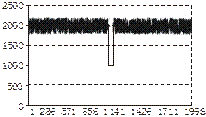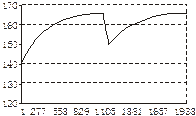题目内容
Wine drinkers tend to buy healthier food than beer drinkers, according to a Danish study published on Tuesday on the website of a weekly medical magazine.
People who bought wine at the store were also more likely to buy fruit, vegetables, fish, lean meat (瘦肉) and milk than beer buyers did, said the study.
Beer buyers were more likely to buy frozen dinners, cold cuts, pork, sugary products, and soft drinks.
The study was conducted by four researchers from the National Institute of Public Health over the course of six months.
Alcohol researchers Erik Schulenburg and Marten Greenback and two other doctors collected 3.5 million receipts from 98 stores. The customers at the stores represented a large number of Danish people, they said.
“Our results confirm international studies which show that wine drinkers tend to eat more fruit, vegetables and fish and rarely eat fats, compared to those who like other kinds of alcoholic drinks,” they concluded.
Wine buyers also tended to have higher education levels, higher earnings and be in better mental health, they added.
Their interest in consumers’ shopping bags followed a series of studies in the Danish media. The studies suggested that wine drinkers ran a lower risk of cardiovascular (心血管的) disease and some types of cancer than beer drinkers.
小题1:The passage mainly tells us that wine drinkers ______.
小题2:According to the passage, beer buyers are less likely to buy ______.
小题3:The researchers did the study mainly by means of ______.
小题4:Which of the following is NOT a feature of wine drinkers according to the passage?
People who bought wine at the store were also more likely to buy fruit, vegetables, fish, lean meat (瘦肉) and milk than beer buyers did, said the study.
Beer buyers were more likely to buy frozen dinners, cold cuts, pork, sugary products, and soft drinks.
The study was conducted by four researchers from the National Institute of Public Health over the course of six months.
Alcohol researchers Erik Schulenburg and Marten Greenback and two other doctors collected 3.5 million receipts from 98 stores. The customers at the stores represented a large number of Danish people, they said.
“Our results confirm international studies which show that wine drinkers tend to eat more fruit, vegetables and fish and rarely eat fats, compared to those who like other kinds of alcoholic drinks,” they concluded.
Wine buyers also tended to have higher education levels, higher earnings and be in better mental health, they added.
Their interest in consumers’ shopping bags followed a series of studies in the Danish media. The studies suggested that wine drinkers ran a lower risk of cardiovascular (心血管的) disease and some types of cancer than beer drinkers.
小题1:The passage mainly tells us that wine drinkers ______.
| A.eat more vegetables than beer drinkers |
| B.usually buy healthier food than beer drinkers |
| C.are mostly healthier than beer drinkers |
| D.run a lower risk of diseases than beer drinkers |
| A.cold cuts | B.pork | C.soft drinks | D.vegetables |
| A.handing out papers with a list of questions |
| B.collecting receipts from stores |
| C.watching what customers bought at stores |
| D.visiting some families throughout the country |
| A.Rarely eating fats. | B.Being in better mental health. |
| C.Exercising more. | D.Having higher education levels. |
小题1:B
小题2:D
小题3:B
小题4:C
调查显示,喝不同种酒的人购买的食品往往不同,进而导致他们的健康状况也有差别。
小题1:主旨大意题。文章的第一句话是本文的中心句,即Wine drinkers tend to buy healthier food than beer drinkers,故答案为B。
小题2:细节理解题。根据第二、三段内容可知,A、B、C三项都是beer buyers常购买的食品,而D项是wine buyers常购买的食品。
小题3:细节理解题。根据第五段 … collected 3.5 million receipts from 98 stores可知,答案为B
小题4:细节理解题。根据第六段 … rarely eat fats … 和第七段 … have higher education levels, higher earnings and be in better mental health … 可知,A、B、D三项都是wine drinkers的特点,而文章没有提到C项。
小题1:主旨大意题。文章的第一句话是本文的中心句,即Wine drinkers tend to buy healthier food than beer drinkers,故答案为B。
小题2:细节理解题。根据第二、三段内容可知,A、B、C三项都是beer buyers常购买的食品,而D项是wine buyers常购买的食品。
小题3:细节理解题。根据第五段 … collected 3.5 million receipts from 98 stores可知,答案为B
小题4:细节理解题。根据第六段 … rarely eat fats … 和第七段 … have higher education levels, higher earnings and be in better mental health … 可知,A、B、D三项都是wine drinkers的特点,而文章没有提到C项。

练习册系列答案
 百年学典课时学练测系列答案
百年学典课时学练测系列答案 仁爱英语同步练习册系列答案
仁爱英语同步练习册系列答案
相关题目

